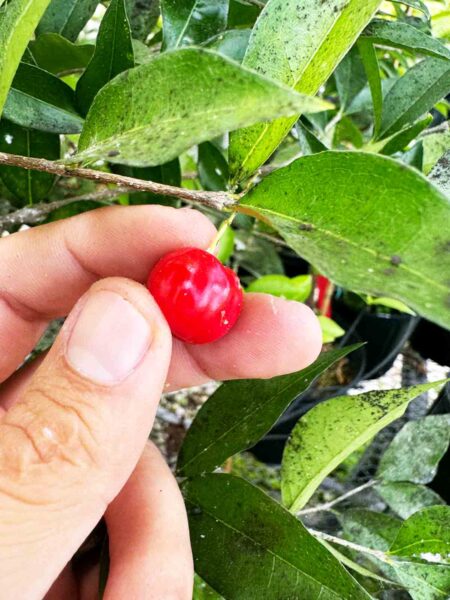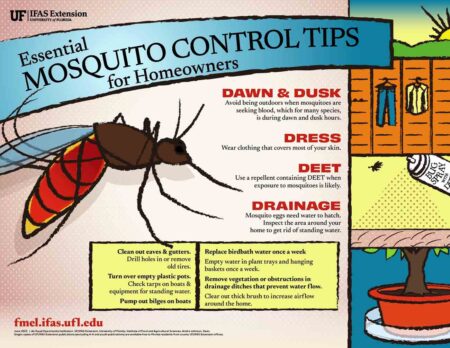NICEVILLE, Fla. — The month of May is usually a relatively dry and warm month. During most Mays, it’s almost as if someone knows where a switch is for water and for heat and they cut the switch on for heat and off for water.
If you take a look at the historic weather pattern for North Florida, we usually have relatively mild, spring-like temperatures and adequate moisture during March and April. But as we move into the month of May, the rain stops and the temperatures become warmer.
Then, as we move out of May into June and July, the rains come back but the temperatures remain warm.
The sudden change in temperature and moisture as we move into May can make it a challenge in gardening in North Florida. But there is plenty to do during May in our lawns, landscapes and gardens.
Just be sure to water to carry your plants, particularly newly planted ones, through any dry weather if this May ends up being an average May.
In today’s article, I’ll share with you the UF/IFAS Extension North Florida Gardening Calendar for the month of May. The link for this calendar is below.
https://edis.ifas.ufl.edu/pdffiles/EP/EP45100.pdf
What to Plant
Annuals/Bedding Plants: Plants that can take summer heat include salvia, angelonia, wax begonia and ornamental pepper. See Annuals/Bedding Plants: https://edis.ifas.ufl.edu/publication/mg319
https://gardeningsolutions.ifas.ufl.edu/plants/ornamentals/summer-bedding-plants.html
Bulbs: Planting early, mid and late-blooming varieties of daylily, ensures months of color from these low-maintenance plants. See Daylilies: https://edis.ifas.ufl.edu/publication/EP006 and Bulbs for Florida: http://edis.ifas.ufl.edu/topic_bulbous_flowers
Vegetables: Okra will take the heat as well as southern pea and sweet potato. See Vegetable Gardening in Florida: http://edis.ifas.ufl.edu/topic_vegetable_gardening
What to Do
Pests: Insects become more active in warm weather. Watch for thrips, scales and mites on ornamental plants. See Landscape Pest Management: http://edis.ifas.ufl.edu/topic_landscape_pests
Gardenias: Yellowing of older leaves is usually normal; yellowing of new growth usually indicates a micronutrient deficiency. See Gardenias at a Glance: http://edis.ifas.ufl.edu/ep338
Oleanders: Inspect chewed or ragged leaves for oleander caterpillars. See Oleander Pest Management: http://edis.ifas.ufl.edu/topic_oleander_ipm
Lawn insects: Watch for damage from chinch bugs in St. Augustinegrass and begin scouting for newly hatched mole crickets in lawns. See Turfgrass Pest Insects: http://edis.ifas.ufl.edu/topic_turf_pest_insects
Tomatoes: Watch for pests, disease and nutritional disorders on tomato plants. See Home Tomato Gardening: http://edis.ifas.ufl.edu/topic_tomato_gardening
New plants: Produce more plants by air layering, grafting, division or cuttings See Seeds and Propagation (Lawn and Garden): http://edis.ifas.ufl.edu/topic_garden_propagation
Trees: Prepare for hurricane season by checking trees for damaged or weak branches and pruning if needed. Hire an ISA-certified arborist. See International Society of Arboriculture: http://isa-arbor.com/ and Pruning Landscape Trees and Shrubs: http://edis.ifas.ufl.edu/topic_tree_pruning
Lawn Mowing: Encourage healthy growth and discourage insects, weeds and diseases by mowing correctly. See Lawn Mowing: http://edis.ifas.ufl.edu/topic_lawn_mowing
Larry Williams is the Extension horticulture agent with the Okaloosa County Cooperative Extension Service, University of Florida. Contact Larry at 689-5850 or email lwilliams@myokaloosa.com.






